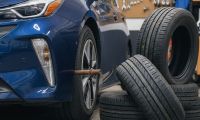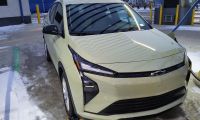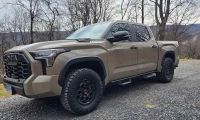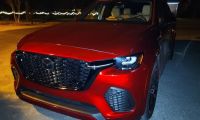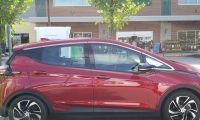The VW ID Buzz concept has the potential to immediately erase the bad blood between EV enthusiasts and their primary role in the Diesel gate scandal. The question is will they get it right. Depending on how the production model varies from the concept, it could be the first electric van with decades of sentiment behind it. For what it’s worth, I have brought it to the attention of some of my baby boomer friends and their immediate reaction was “I WANT IT!”
Multi-use platform
The current MQB platform has the flexibility to support products ranging from the subcompact VW Polo to the 2018 three-row, seven-seat, full-size Atlas crossover. To date more than 8 million VW, Audi, Škoda, and SEAT vehicles have been manufactured atop the MQB component set in 32 far-flung plants. MEB is MQB evolved to the next stage with battery-electric (no combustion) propulsion.
Lofty goals
VW’s goal is to sell at least a million electric cars per year by 2025, with the first of a promised 30 models slated for sale in the 2020 model year, followed shortly thereafter by something like the Buzz in 2022 (assuming customers love the concept as much as Klaus Bischoff, the VW brand’s design head, does).
MEB consists of three key elements: a substantial battery pack integrated with the floor structure, forward-mounted power-control electronics, and, in the case of the original I.D., a single electric motor in unit with the final-drive mechanism positioned between the rear wheels. The I.D. Buzz is powered by an electric drive unit at each axle. This blueprint is clever but hardly original. It also describes the Tesla Model S (and X) exactly.
VW is aiming for a single-charge range of 373 miles (on the not-so-stringent European driving cycle), but less expensive models surely will use smaller battery packs with less kWh capacity and therefore shorter range. Rear-wheel drive may seem like an odd move for this maker, hence the dual-motor, all-wheel-drive alternative for upscale models such as the Buzz. Inductive charging is also part of the game plan to ease the charging task.
Winning combination
The Buzz seats up to eight in a box that touches all of VW’s current design values: It’s likable, sensual, innovative, logical, and a pure reflection of the company’s brand equity. Thanks to an overall height towering over that of the I.D. concept and fully autonomous operational capability, the Buzz can be a party on wheels with totally flexible seating arrangements, a center console that can be relocated, and a full skylight roof.
If all of the concept ends up being delivered, the I.D. Buzz has the potential to be a big seller for the eco conscious family. Dare I say, it may actually even fill a void that was left by the Honda Element in the flexibility department.







